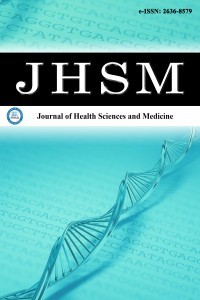1.
Patterson TF, Andriole VT. Detection, significance, and therapy of bacteriuria in pregnancy. Update in the managed health care era. <em>Infect Dis Clin North Am.</em> 1997;11(3):593-608. doi:10.1016/s0891-5520(05)70375-5
2.
Nicolle LE, Gupta K, Bradley SF, et al. Clinical practice guideline for the management of asymptomatic bacteriuria: 2019 Update by the Infectious Diseases Society of America. <em>Clin Infect Dis.</em> 2019;68(10):e83-e110. doi:10.1093/cid/ciy1121
3.
Golan A, Wexler S, Amit A, Gordon D, David MP. Asymptomatic bacteriuria in normal and high-risk pregnancy. <em>Eur J Obstet Gynecol Reprod Biol.</em> 1989;33(2):101-108. doi:10.1016/0028-2243 (89)90202-5
4.
Wing DA, Fassett MJ, Getahun D. Acute pyelonephritis in pregnancy: an 18-year retrospective analysis. <em>Am J Obstet Gynecol.</em> 2014;210(3):219.e1-219.e2196. doi:10.1016/j.ajog.2013.10.006
5.
Moore A, Doull M, Grad R, et al. Recommendations on screening for asymptomatic bacteriuria in pregnancy. <em>CMAJ.</em> 2018;190(27): E823-E830. doi:10.1503/cmaj.171325
6.
Romero R, Oyarzun E, Mazor M, Sirtori M, Hobbins JC, Bracken M. Meta-analysis of the relationship between asymptomatic bacteriuria and preterm delivery/low birth weight. <em>Obstet Gynecol.</em> 1989;73(4):576-582.
7.
Hill JB, Sheffield JS, McIntire DD, Wendel GD Jr. Acute pyelonephritis in pregnancy. <em>Obstet Gynecol.</em> 2005;105(1):18-23. doi:10.1097/01.AOG.0000149154.96285.a0
8.
Archabald KL, Friedman A, Raker CA, Anderson BL. Impact of trimester on morbidity of acute pyelonephritis in pregnancy. <em>Am J Obstet Gynecol.</em> 2009;201(4):406.e1-406.e4064. doi:10.1016/j.ajog.2009.06.067
9.
Sweet RL. Bacteriuria and pyelonephritis during pregnancy. <em>Semin Perinatol.</em> 1977;1(1):25-40.
10.
Petersson C, Hedges S, Stenqvist K, Sandberg T, Connell H, Svanborg C. Suppressed antibody and interleukin-6 responses to acute pyelonephritis in pregnancy. <em>Kidney Int.</em> 1994;45(2):571-577. doi:10.1038/ki.1994.74
11.
Nicolle LE, Gupta K, Bradley SF, et al. Clinical practice guideline for the management of asymptomatic bacteriuria: 2019 Update by the Infectious Diseases Society of America. <em>Clin Infect Dis. </em>2019;68(10):e83-e110. doi:10.1093/cid/ciy1121
12.
Graseck AS, Thompson JL, Bryant AS, Cahill AG, Silverman NS, Turrentine MA. Urinary tract infections in pregnant individuals. <em>Obstet Gynecol.</em> 2023;142(2):435-445. doi:10.1097/AOG.0000000000005269
13.
Smaill FM, Vazquez JC. Antibiotics for asymptomatic bacteriuria in pregnancy. <em>Cochrane Database Syst Rev.</em> 2019;2019(11): CD000490. doi:10.1002/14651858.CD000490.pub4
14.
Sobel JD, Brown P. Urinary tract infections. Mandell, Douglas, and Bennett’s principles and practice of infectious diseases, ninth edition. Bennett JE, Dolin R, BlaserMJ (eds). Philadelphia. 2020:962-989.
15.
Rubin RH, Shapiro ED, Andriole VT, Davis RJ, Stamm WE. Evaluation of new anti-infective drugs for the treatment of urinary tract infection. Infectious Diseases Society of America and the Food and Drug Administration. <em>Clin Infect Dis.</em> 1992;15 Suppl 1:S216-S227. doi:10.1093/clind/15.supplement_1.s216
16.
Widmer M, Lopez I, Gülmezoglu AM, Mignini L, Roganti A. Duration of treatment for asymptomatic bacteriuria during pregnancy. <em>Cochrane Database Syst Rev.</em> 2015;2015(11):CD000491. doi:10.1002/14651858.CD000491.pub3
17.
The European Committee on Antimicrobial Susceptibility Testing. Breakpoint tables for interpretation of MICs and zone diameters. Version 14.0, 2024. http://www.eucast.org.
18.
Forbes BA, Sahm DF, Weissfeld AS. Infections of the Urinary Tract. In: Bailey & Scott’s Diagnostic Microbiology. 12<sup>th</sup> ed. Philadelphia: Elsevier. 2007: 842-855.
19.
Kaye KS, Gupta V, Mulgirigama A, et al. Antimicrobial resistance trends in urine escherichia coli isolates from adult and adolescent females in the United States from 2011 to 2019: rising ESBL strains and impact on patient management. <em>Clin Infect Dis.</em> 2021;73(11):1992-1999. doi:10.1093/cid/ciab560
20.
Medina M, Castillo-Pino E. An introduction to the epidemiology and burden of urinary tract infections. <em>Ther Adv Urol.</em> 2019;11: 1756287219832172. doi:10.1177/1756287219832172
21.
Foxman B. Urinary tract infection syndromes: occurrence, recurrence, bacteriology, risk factors, and disease burden. <em>Infect Dis Clin North Am.</em> 2014;28(1):1-13. doi:10.1016/j.idc.2013.09.003
22.
Vazquez JC, Abalos E. Treatments for symptomatic urinary tract infections during pregnancy. <em>Cochrane Database Syst Rev.</em> 2011; (1):CD002256. doi:10.1002/14651858.CD002256.pub2
23.
Critchley IA, Cotroneo N, Pucci MJ, Jain A, Mendes RE. Resistance among urinary tract pathogens collected in Europe during 2018. <em>J Glob Antimicrob Resist</em>. 2020;23:439-444.
24.
Sanchez GV, Master RN, Karlowsky JA, Bordon JM. In vitro antimicrobial resistance of urinary <em>Escherichia coli</em> isolates among U.S. outpatients from 2000 to 2010. <em>Antimicrob Agents Chemother. </em>2012;56(4):2181-20183. doi:10.1128/AAC.06060-11
25.
Centers for Disease Control and Prevention. Antibiotic Resistance Threats in the United States 2019. Published November 13, 2019. Accessed April 5, 2024. https://www.cdc.gov/drugresistance/pdf/threats-report/2019-ar-threats-report-508.pdf
26.
Frazee BW, Trivedi T, Montgomery M, Petrovic DF, Yamaji R, Riley L. Emergency department urinary tract infections caused by extended-spectrum β-lactamase-producing enterobacteriaceae: many patients have no identifiable risk factor and discordant empiric therapy is common. <em>Ann Emerg Med.</em> 2018;72(4):449-456. doi:10.1016/j.annemergmed.2018.05.006
27.
Simmering JE, Tang F, Cavanaugh JE, Polgreen LA, Polgreen PM. The increase in hospitalizations for urinary tract infections and the associated costs in the United States, 1998-2011. <em>Open Forum Infect Dis.</em> 2017;4(1):ofw281. doi:10.1093/ofid/ofw281
28.
Bookstaver PB, Bland CM, Griffin B, Stover KR, Eiland LS, McLaughlin M. A review of antibiotic use in pregnancy. <em>Pharmacotherapy.</em> 2015;35(11):1052-1062. doi:10.1002/phar.1649
29.
Committee Opinion No. 717: Sulfonamides, Nitrofurantoin, and Risk of Birth Defects. <em>Obstet Gynecol.</em> 2017;130(3):e150-e152. doi:10.1097/AOG.0000000000002300
30.
Macrobid - Nitrofurantoin Monohydrate and Nitrofurantoin, Macrocrystalline Capsule. US Food and Drug Administration (FDA) Approved Product Information. Updated March 2009. Accessed April 12, 2023. https://dailymed.nlm.nih.gov/
31.
Graseck AS, Thompson JL, Bryant AS, Cahill AG, Silverman NS, Turrentine MA. Urinary tract infections in pregnant individuals<em>. Obstet and Gynecol</em>, 2023;142(2),435-445.
32.
Kaçmaz B, Gül S, Ayaşlıoğlu E, et al. İdrarda piyüri ve kültür sonuçlarının karşılaştırılması. <em>Kırıkkale Uni Med J. April.</em> 2016; 18(1):19-22. doi:10.24938/kutfd.252667
33.
Sobel JD, Kaye D. Urinary tract infections. Mandell, Douglas, and Bennett’s Principles and Practice of Infectious Diseases. 8<sup>th</sup> Edition. 2015:886-913.
34.
Macejko AM, Schaeffer AJ. Asymptomatic bacteriuria and symptomatic urinary tract infections during pregnancy. <em>Urol Clin North Am.</em> 2007;34(1):35-42. doi:10.1016/j.ucl.2006.10.010
35.
Schneeberger C, van den Heuvel ER, Erwich JJHM, Stolk RP, Visser CE, Geerlings SE. Contamination rates of three urine-sampling methods to assess bacteriuria in pregnant women. <em>Obstet Gynecol.</em> 2013;121(2 Pt 1):299-305. doi:10.1097/AOG.0b013e31827e8cfe
36.
Widmer M, Lopez I, Gülmezoglu AM, Mignini L, Roganti A. Duration of treatment for asymptomatic bacteriuria during pregnancy. <em>Cochrane Database Syst Rev.</em> 2015;2015(11):CD000491. doi:10.1002/14651858.CD000491.pub3
37.
Wang T, Wu G, Wang J, et al. Comparison of single-dose fosfomycin tromethamine and other antibiotics for lower uncomplicated urinary tract infection in women and asymptomatic bacteriuria in pregnant women: a systematic review and meta-analysis. <em>Int J Antimicrob Agents.</em> 2020;56(1): 106018. doi:10.1016/j.ijantimicag.2020.106018
38.
Langermans LM, Cools W, Van Limbergen I, Gucciardo L, Faron G. Optimal timing to screen for asymptomatic bacteriuria during pregnancy: first vs. second trimester<em>. J Perinat Med.</em> 2021;49(5):539-545. doi:10.1515/jpm-2020-0322

